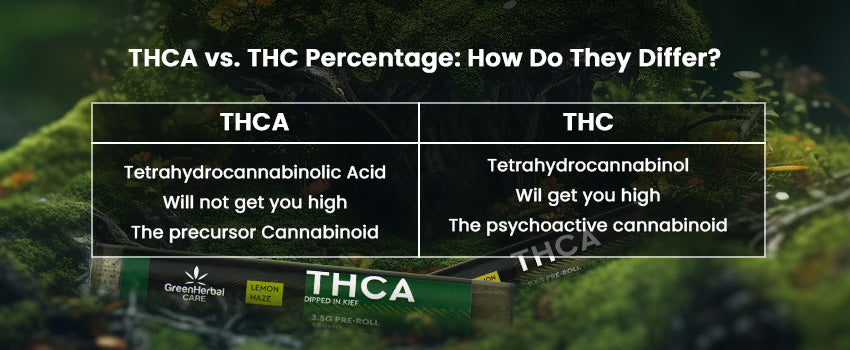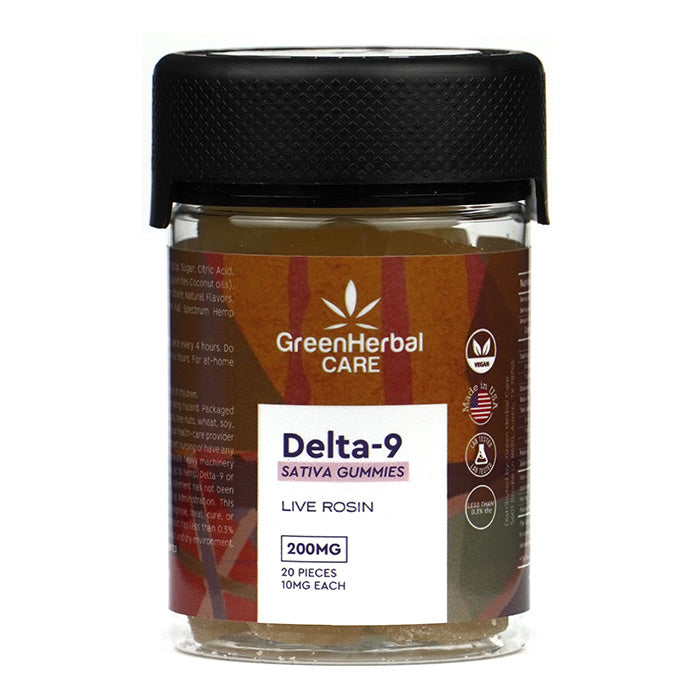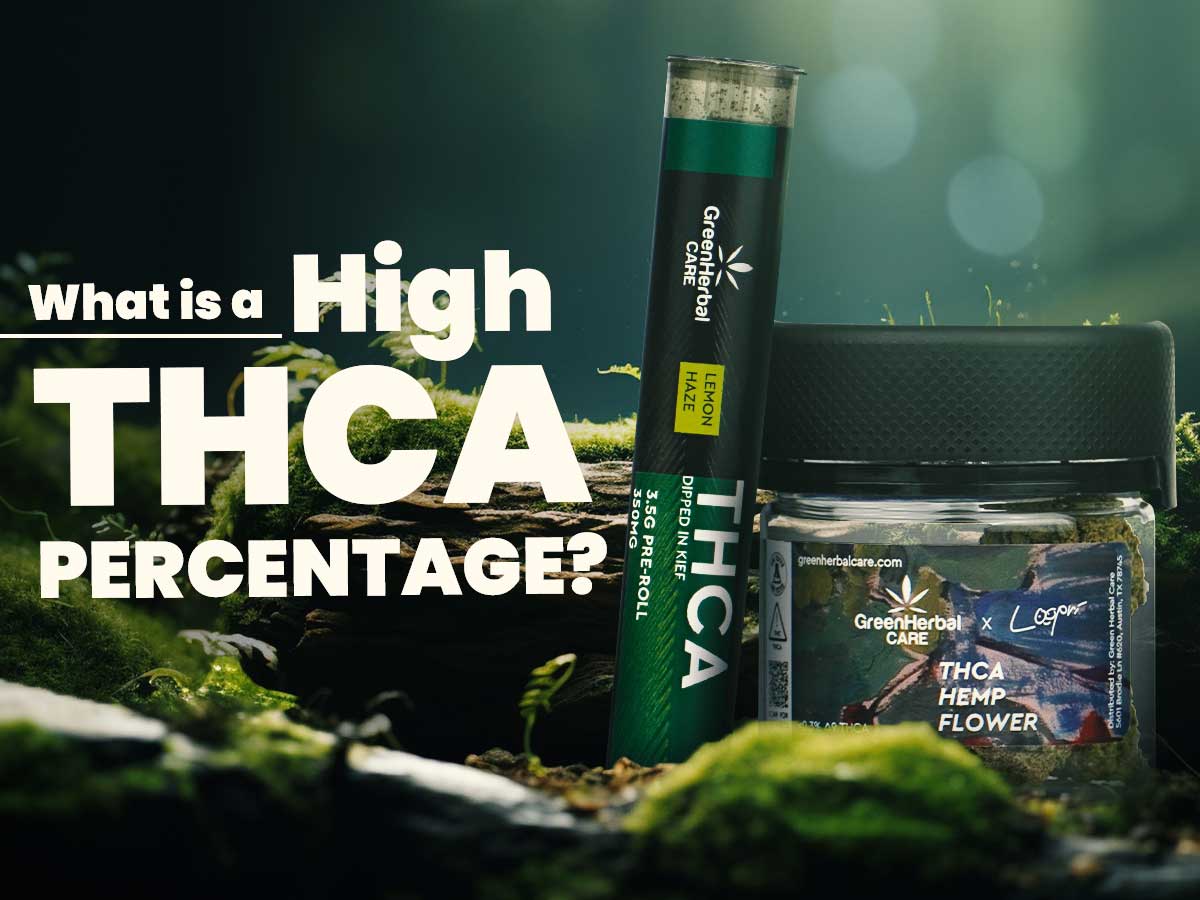THCA stands for tetrahydrocannabinolic acid, a natural compound found in raw cannabis. It is the form of THC before heat changes it. On its own, THCA does not cause a high, but once heated through smoking, vaping, or cooking, it changes into THC.
People often look at THCA percentages because it gives them an idea of how strong the product might be after heating. A higher percentage usually means more potential strength, while lower levels may feel lighter.
This raises a common question: what exactly is considered a high THCA percentage? To answer this, it helps to know the average levels in flower and concentrates, and what factors affect those numbers.
What THCA Means in Cannabis?
THCA, or tetrahydrocannabinolic acid, is the natural form of THC found in raw cannabis. It does not produce any psychoactive effects on its own.
THCA only turns into THC when exposed to heat, such as through smoking, vaping, or cooking. This process is called decarboxylation.
Knowing the THCA content helps users understand the potential strength of the cannabis product once it is heated.
Understanding THCA Percentage
THCA percentage shows how much THCA is present in a cannabis product. It can appear on flower, concentrates, or extracts. In simple terms, it helps you understand the potential strength after heating.
Higher percentages usually indicate stronger effects, while lower percentages suggest a milder experience. For flower, low THCA is around 5–15%, mid-range is 15–20%, and high is above 20%. Concentrates have much higher levels, often 50% or more.
By checking the THCA percentage, users can make better choices for their needs and know what to expect from the product.
Shop THCA Products
What is a Good THCA Percentage?
The ideal percentage is about 15-20% when you buy a THCA product. It is the optimal level that balances the potential benefits and risks while producing a good amount of THC when decarboxylated.
Individual responses to the percentage vary depending on age, tolerance, metabolism, and other factors. However, we recommend sticking to the 15-20% THCA range. If you are a first-timer, start with a lower percentage for safety. Increase it gradually to determine the optimal dose.
Additionally, the THCA percentage also varies between products. Gummies, flowers, diamonds, and other products have different percentages.
Also Read: Does THCA Get You High?
Factors That Influence THCA Levels
Several things affect the THCA content in cannabis:
-
Genetics of the strain: Some strains naturally produce more THCA than others.
-
Growing and harvesting: Sunlight, nutrients, and harvest timing all impact THCA levels.
-
Curing and storage: Proper drying, curing, and storing maintain THCA, while poor methods can reduce it.
Understanding these factors helps users choose products that match their needs and expectations.
THCA vs. THC Percentage: How Do They Differ?

As we said, a high THCA percentage will convert into a high THC percentage. THCA with a high percentage will offer better therapeutic effects, and THC with a high percentage will create an overwhelming high.
Different strains have different percentages, and the numbers depend on factors like the strain’s genetics, cultivation and harvest, and how well it is cured. Also, indica strains have higher THC percentages than sativa strains.
What is a High THCA Percentage in Gummies?
The most popular product type in recent years, THCA gummies do not involve heating, so you need not worry about an intense high. Some gummies may get you mildly high because of the other cannabinoids in them.
The ideal percentage in gummies is around 10-15%, which is enough to enjoy the potential benefits without the risks and side effects.
What is a High THCA Percentage in Flowers?
Looking for THCA flowers? A high THCA percentage in flowers ranges around 25-30%. Flowers have the highest THCA concentration. However, the percentage depends on what seeds the farmers use and how they cultivate the flowers.
What is a High THC Percentage in Diamonds?
It is the most potent product type. If you have a high tolerance, THCA diamonds may be perfect.
They require heating at extreme temperatures, converting most of the THCA content into THC. Result: intense high that will take you to cloud #99. Even an experienced cannabis user should use THCA diamonds with high concentration carefully.
How Do You Measure THCA Concentration?
The THC percentage of each cannabis strain determines its THCA percentage prior to decarboxylation. Every cannabis strain is unique, with its own cannabinoid profile. To verify the actual THCA percentage in the product you’re consuming—and thereby assess its potential strength—testing for total cannabinoids is crucial.
Reputable CBD retailers prioritize transparency about the contents of their products. At Green Herbal Care, we provide 3rd Party Lab Analyses for customer review, ensuring you have the full details on what’s in your purchase.
What Is Considered a High THCA Percentage?
Generally, any cannabis strain with a THC percentage of 15% or higher will have a high THCA percentage before decarboxylation. Once the THCA is decarboxylated, the psychoactive properties increase due to the conversion of THCA into THC. However, it’s important to note that THCA content does not directly correspond to THC content. For example, a plant with 22% THCA and only 0.2% THC might have a total THC content of approximately 24%, with much of it remaining in its inactive form.
Instead, the total cannabinoids analyzed would measure 22.2%, but this doesn’t mean the compound contains 22.2% active THC.
Calculating Total THC
To estimate total THC and assess potency, the following formula is typically used:
THCtotal = (%THCA) x 0.877 + (%THC)
It’s important to note that the results may be influenced by various factors, so this formula should be treated as an approximation rather than a definitive measurement.
Also Read: Is THCA Legal in Texas?
Why People Look for High THCA Percentages
Many users check THCA percentages to estimate the strength of a product after heating. Higher THCA can mean stronger potential effects, which some people prefer.
It also allows users to get more value in smaller amounts since higher potency means less product may be needed for the desired effect.
That said, not everyone chases high numbers. Some people prefer a balanced experience with moderate THCA levels that suit their tolerance and personal preference.
Safe and Smart Use Tips
-
Start with small amounts: Even high-THCA products can feel strong if you’re new or have low tolerance.
-
Pay attention to your body: Notice how you feel and adjust use accordingly.
-
Choose quality products: Look for lab-tested items to ensure accurate THCA levels and safety.
Final Thoughts
The ideal THCA percentage is about 15-20%. Consuming anything above 20%, especially through heating, like vaping or smoking, can cause side effects like dry mouth, anxiety, and dizziness. We recommend moderation.
Frequently Asked Questions
Is 20% THCA strong?
THCA’s strength varies. Although 25% THCA is supposedly relatively high, your body’s tolerance levels and desired effects are crucial in determining its perceived strength. Start with small doses and slowly increase the dosing to determine your tolerance and experience.
How powerful is THCA?
THCA is a precursor to THC, the psychoactive cannabinoid. Its potency varies based on different factors like your body’s metabolism, the cannabis plant’s strain, and cultivation methods. Raw THCA is non-psychoactive but offers various therapeutic benefits, like neuroprotective and anti-inflammatory effects, contributing to its perceived potency.
Does THCA produce a high?
THCA does not produce high in raw form, but exposing it to heat through vaping, smoking, or cooking causes decarboxylation, converts it into THC, which produces psychoactive effects (high). Raw THCA offers potential benefits without intoxication.
Does THCA test positive?
Drug tests detect THC instead of THCA. Since raw THCA is non-psychoactive, it does not create intoxication and is unlikely to trigger a positive reaction in standard drug tests. However, beware of a drug test’s specific requirements and consult an expert or a legal professional if you worry about the test.
Is THCA natural or synthetic?
THCA occurs naturally. Biosynthesis forms THCA within the trichomes of cannabis flowers and leaves. Unlike lab-produced synthetic cannabinoids, THCA is natural and present in different cannabis strains, which manufacturers extract and concentrate to create medicinal or recreational products.




